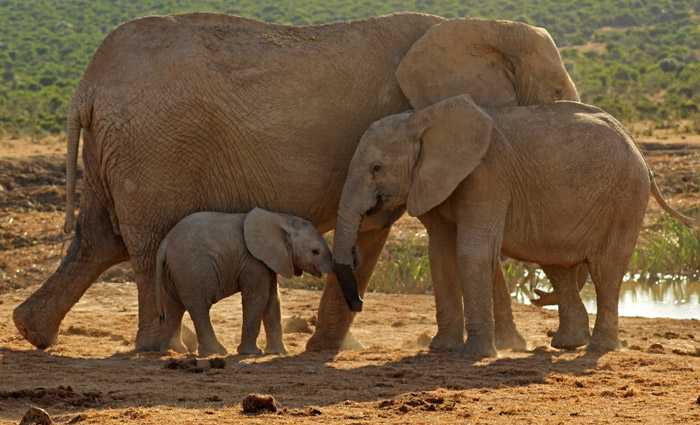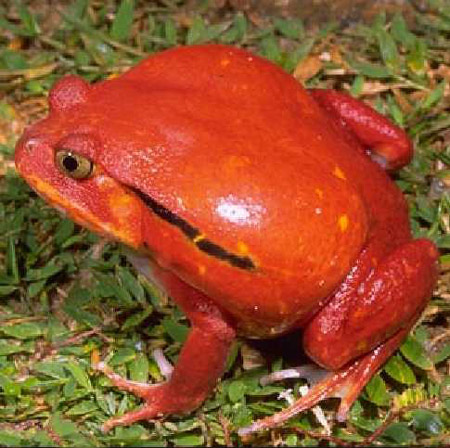With the 17th meeting of the Conference of the Parties for CITES due to be held in Johannesburg, South Africa, from 24 September – 05 October 2016, a provisional list of proposals for amendment of current trade allowances for endangered species of wild fauna and flora has been announced.
The CITES Conference of the Parties is the supreme decision-making body and comprises all its member states. The parties use a set of biological and trade criteria to help determine whether a species should be included in Appendices I or II.
CITES Appendix I species are threatened with extinction, and trade in specimens of these species is permitted only in exceptional circumstances. Appendix II includes species not necessarily threatened with extinction but in which trade must be controlled to avoid utilisation incompatible with their survival.
At each regular meeting, parties submit proposals based on those criteria to amend these two CITES Appendices. Those amendment proposals are discussed and then submitted to a vote. The below details the proposals put forward by the various African states:
– Species: Lion. Proponents: Chad, Côte d’Ivoire, Gabon, Guinea, Mauritania, Niger, Nigeria and Togo Proposal: Transfer of all African populations of lions from Schedule II to Schedule I.

– Species: Barbary macaque. Proponents: Morocco, along with the European Union. Proposal: Transfer from Schedule II to Schedule I
– Species: Cape mountain zebra. Proponents: South Africa. Proposal: South Africa proposes the transfer of the Cape mountain zebra from Appendix I to Appendix II.
– Species: Southern white rhinoceros. Proponents: Swaziland. Proposal: To alter the existing annotation on the Appendix II listing of Swaziland’s white rhino, adopted at the 13th Conference of Parties in 2004, to permit a limited and regulated trade in white rhino horn, which has been collected in the past from natural deaths, or recovered from poached Swazi rhino, as well as horn to be harvested in a non-lethal way from a limited number of white rhino in the future in Swaziland.

– Species: African elephant. Proponents: Benin, Burkina Faso, Central African Republic, Chad, Kenya, Liberia, Niger, Nigeria, Senegal, Sri Lanka and Uganda. Proposal: Inclusion of all populations of African elephant in Appendix I through the transfer from Appendix II to Appendix I of the populations of Botswana, Namibia, South Africa and Zimbabwe.
– Species: African elephant. Proponents: Namibia. Proposal: Delete the annotation to the listing of the Namibian African elephant population in Appendix II by deleting any reference to Namibia in that annotation.
– Species: African elephant. Proponents: Namibia and Zimbabwe. Proposal: Amend the present Appendix II listing of the population of Zimbabwe of African elephant by removing the annotation to achieve an unqualified Appendix II listing.

– Species: Long-tailed, white-bellied, giant and South African pangolins. Proponents: Angola, Botswana, Central African Republic, Chad, Côte d’Ivoire, Gabon, Guinea, Liberia, Nigeria, Togo and the United States of America. Proposal: Transfer of all listed pangolin species from CITES Appendix II to Appendix I.
– Species: African grey parrot. Proponents: Angola, Chad, European Union, Gabon, Guinea, Nigeria, Senegal and Togo. Proposal: Transfer of African grey parrot from Appendix II to Appendix I.

– Species: Nubian flapshell, Senegal flapshell, Aubry’s soft-shelled, Zambezi flapshell, Nile soft-shelled, Euphrates soft-shelled turtles. Proponents: Burkina Faso, Chad, Gabon, Guinea, Liberia, Mauritania, Nigeria, Togo and the United States of America. Proposal: Inclusion of the six species of the family Trionychidae in Appendix II.
– Species: Pygmy chameleons. Proponents: Central African Republic, Chad, Gabon, Nigeria, Kenya and the United States of America. Proposal: Inclusion of pygmy chameleons in Appendix II.
– Species: Masobe gecko. Proponents: Madagascar, along with the European Union. Proposal: Inclusion of the Masobe gecko to Appendix II.
– Species: Turquoise dwarf gecko. Proponents: Tanzania, along with the European Union. Proposal: Inclusion of the turquoise dwarf gecko to Appendix I.
– Species: Ashe’s bush viper and Kenya horned viper. Proponents: Kenya. Proposal: Inclusion of both species of viper in Appendix II.
– Species: Nile crocodile. Proponents: Madagascar. Proposal: Maintenance of the Malagasy population of Nile crocodile in Appendix II subject to the following annotations: 1. No skins or products within the artisanal industry from wild animals less than 1m or greater than 2.5m total length will be permitted for national or international trade. 2. An initial wild harvest ceiling of 3,000 animals per year for the artisanal industry will be imposed for the first three years of operation (2017-2019). 3. No export of raw or processed skins harvested from the wild will be permitted for the first 3 years. 4. Farm production shall be restricted to ranching and/or captive breeding, with national skin production quotas. 5. Management, wild harvest ceiling and national skin production quotas will be audited and reviewed annually by international experts for the first three years to ensure sustainability.
– Species: Burrowing, green burrowing, tomato, false tomato and Antsouhy tomato frogs. Proponents: Madagascar. Proposal: Inclusion of the above species of frogs in Appendix II, including a downgrading of the tomato frog from Appendix I to Appendix II.

– Species: Thresher sharks, devil rays and silky sharks. Proponents: Egypt, Gabon, Ghana, Guinea, Guinea-Bissau, Mauritania and Senegal, among others. Proposal: Inclusion of the mentions species of viper in Appendix II.
– Species: Algerian fir. Proponents: Algeria. Proposal: Inclusion of the Algerian fir in Appendix I.
– Species: African rosewood. Proponents: Benin, Burkina Faso, Chad, Côte d’Ivoire, European Union, Guinea, Guinea-Bissau, Nigeria, Senegal and Togo. Proposal: Inclusion of African rosewood in Appendix II, without annotation.
– Species: Bubinga. Proponents: Gabon, along with the European Union. Proposal: Inclusion of bubinga species in Appendix II.
– Species: Baobab. Proponents: Madagascar. Proposal: Inclusion of the baobab in Appendix II with limited trade of seeds, fruits, oils and live plants and the inclusion to be annotated for this purpose.

– Species: Natal ginger. Proponents: South Africa. Proposal: Inclusion of Natal ginger in Appendix II.
To comment on this story: Login (or sign up) to our app here - it's a troll-free safe place 🙂.![]()
HOW TO GET THE MOST OUT OF AFRICA GEOGRAPHIC:
- Travel with us. Travel in Africa is about knowing when and where to go, and with whom. A few weeks too early / late and a few kilometres off course and you could miss the greatest show on Earth. And wouldn’t that be a pity? Browse our ready-made packages or answer a few questions to start planning your dream safari.
- Subscribe to our FREE newsletter / download our FREE app to enjoy the following benefits.
- Plan your safaris in remote parks protected by African Parks via our sister company https://ukuri.travel/ - safari camps for responsible travellers






